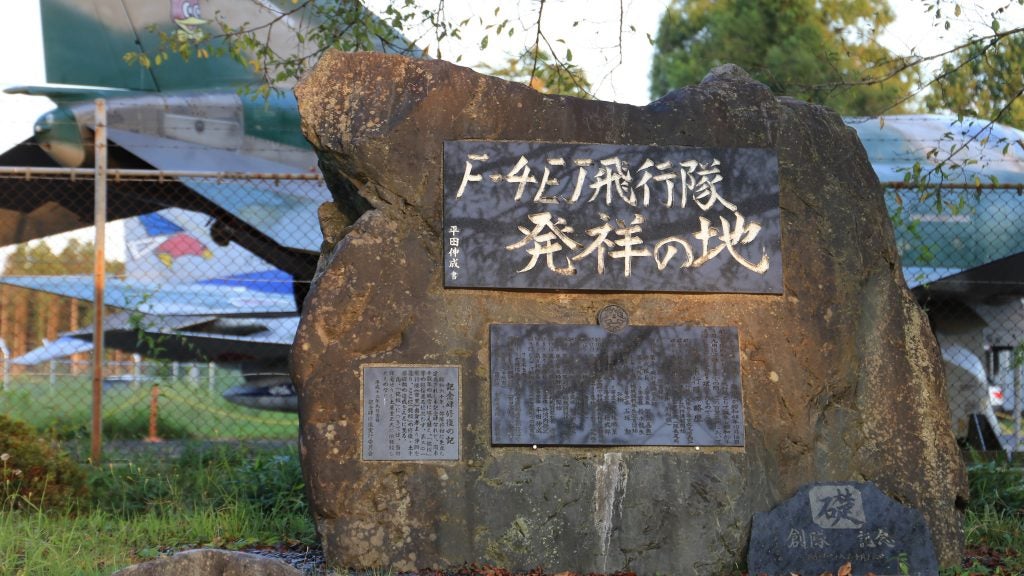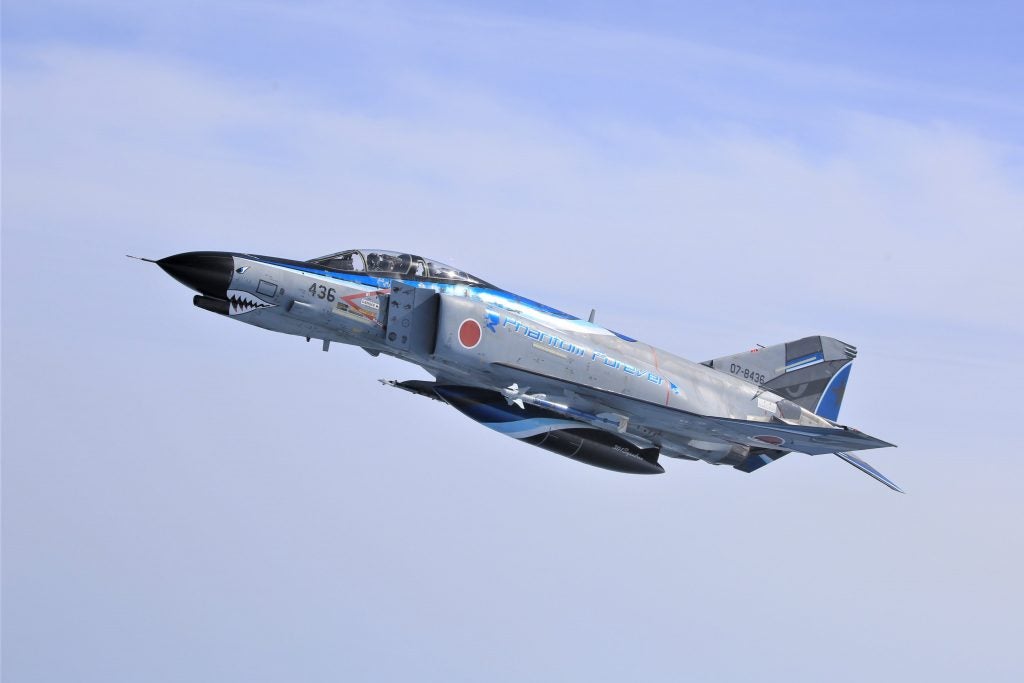The Last of the Samurai Phantoms: F-4EJ Kai 436 and the 301st Tactical Fighter Squadron in Profile
With the retirement of the 302nd Tactical Fighter Squadron’s F-4EJ Kai Phantom IIs, the 301st Tactical Fighter Squadron became the sole squadron in the Japan Air Self-Defense Force flying the F-4EJ Kai. To commemorate their role in closing out a chapter like few others in the JASDF’s history, the 301st Tactical Figher Squadron unveiled a second commemorative liveried Phantom in April, using serial number 07-9436, or ‘436’, as the canvas.
The Livery
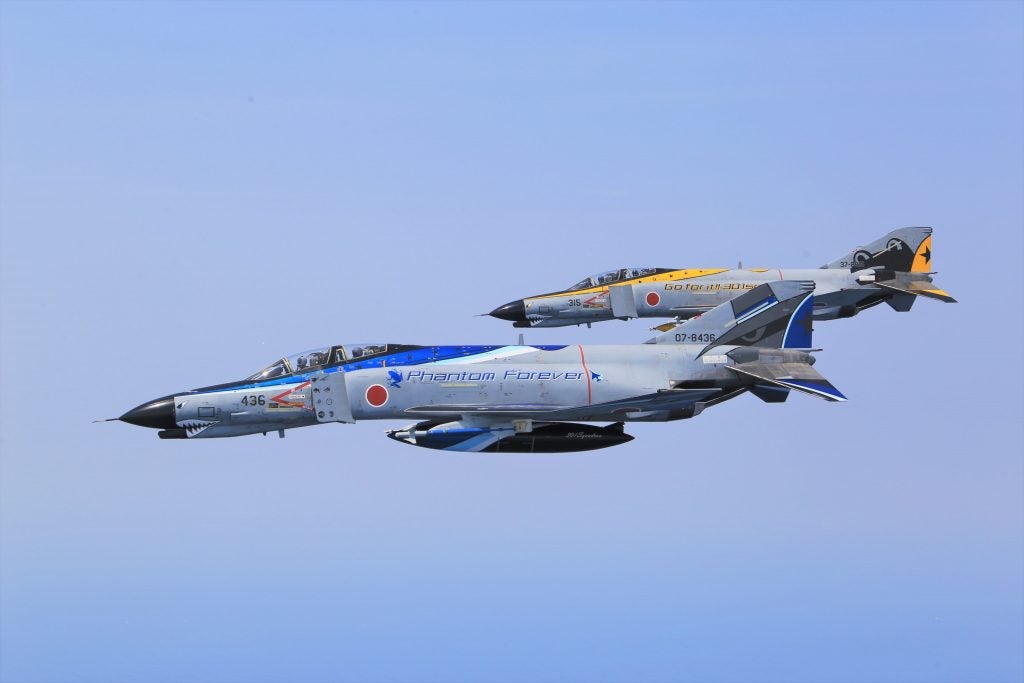
Unlike the striking white and black commemorative Phantoms of the 302nd Tactical Fighter Squadron, 436 features a scarf motif over the standard air superiority grey scheme like its sibling 315, with results that are equally distinctive. Where 315 uses the 301st Tactical Fighter Squadron’s signature yellow, 436 uses vivid blues.
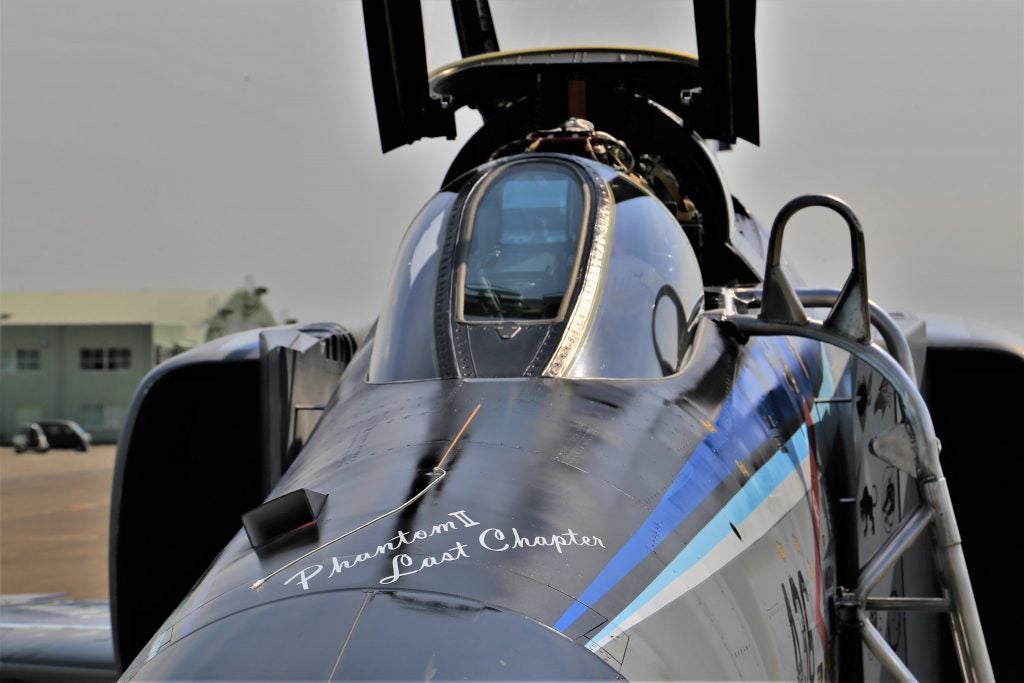
Both 315 and 436 feature the now-iconic shark’s mouth on the nose, however, 436 features “Phantom II Last Chapter” in script on the top of the nose, just before the radome. A dark blue stripe begins at the radome and extends behind the canopy before ending in a scarf’s knot, calling to mind the squadron logo of a scarf-wearing frog.
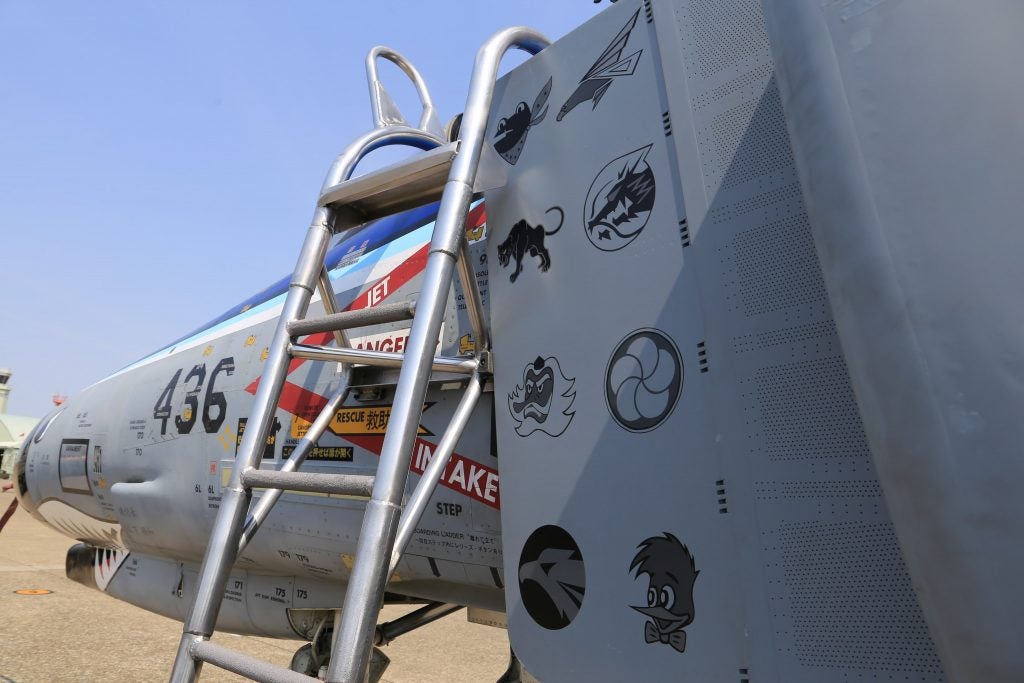
Present on the splitter plates of 436 are the logos of all JASDF squadrons that have operated the F-4 or RF-4. Asides from the 301st Tactical Fighter Squadron, they are:

302nd Tactical Fighter Squadron: Stood up in 1974 at Chitose Air Base in Hokkaido, operating the F-4EJ. The 302nd relocated to Naha Air Base in Okinawa in 1985, and received F-4EJ Kais in 1994. The squadron would relocate again to Hyakuri Air Base in Ibaraki Prefecture in 2009, operating its F-4EJ Kais until their retirement in 2019. They now operate F-35As out of Misawa Air Base in Aomori Prefecture, being the first JASDF F-35 squadron.

8th Tactical Fighter Squadron: Dating back to the F-86 era, the Misawa-based 8th Tactical Fighter Squadron took on the 306th’s F-4EJ Kais in 1997 to replace their ageing Mitsubishi F-1 strike aircraft (officially referred to as “support fighters”). Specializing in air-to-surface combat, their F-4EJ Kais took on a distinctive two-tone blue maritime camouflage scheme. The squadron transitioned to the F-2 in 2009, and now is based at Tsuiki Air Base in Fukuoka Prefecture after moving there in 2016.

303rd Tactical Fighter Squadron: Stood up in 1976 at Komatsu Air Base in Ishikawa Prefecture, operating the F-4EJ. They transitioned to the F-15J in 1987, and were the first JASDF squadron to operate the F-15J. They still fly F-15Js out of Komatsu Air Base today.

304th Tactical Fighter Squadron: Stood up in 1977 at Tsuiki Air Base, operating the F-4EJ. They transitioned to F-15Js in 1990, and relocated to Naha Air Base in 2016.

305th Tactical Fighter Squadron: Stood up in 1978 at Hyakuri Air Base, replacing the 206th Tactical Fighter Squadron which operated F-104Js. The squadron transitioned to F-15Js in 1993, and relocated to Nyutabaru Air Base in Miyazaki Prefecture in 2016, trading places with the 301st Tactical Fighter Squadron.

306th Tactical Fighter Squadron: Stood up in 1981 at Komatsu Air Base operating the F-4EJ, replacing the 205th Tactical Fighter Squadron, and was the final original F-4EJ squadron to be founded. The squadron was first to receive the F-4EJ Kai, completing its transition in 1991. They would replace their F-4EJ Kais with F-15Js in 1997.

501st Tactical Reconnaissance Squadron: The 501st Tactical Reconnaissance Squadron began operating RF-4Es in 1974, moving to Hyakuri Air Base in 1975 alongside retiring its RF-86Fs. The squadron would receive seven RF-4EJ and eight RF-4EJ Kais, both converted from existing F-4EJs, from 1993 onwards. It operated out of Hyakuri up until March 2020, when the squadron was disbanded.
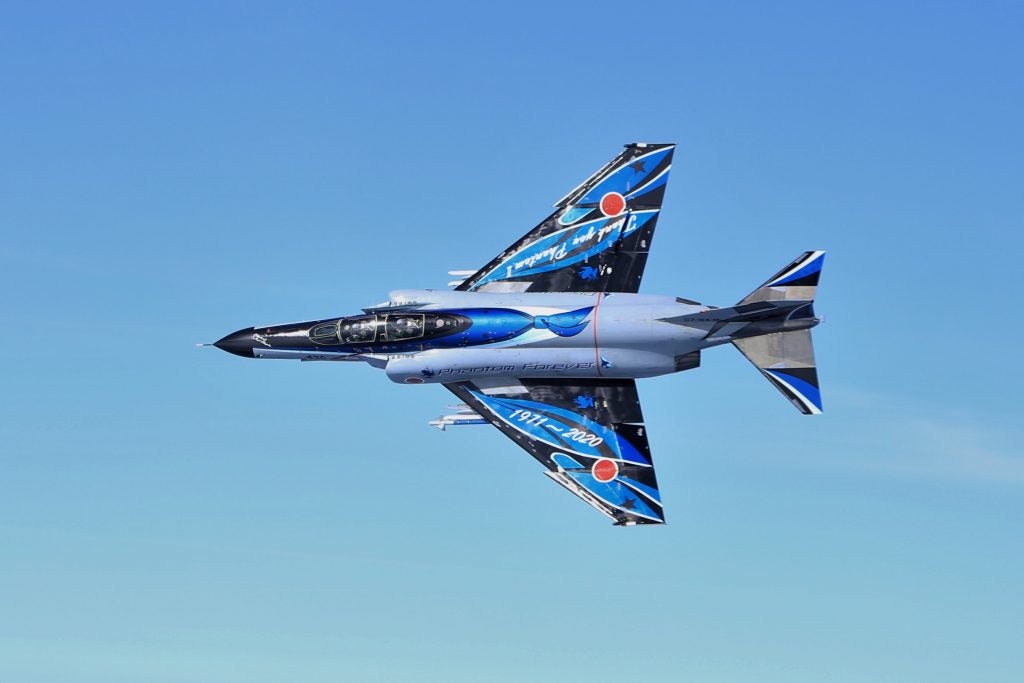
The blacked-out upper surfaces of 436’s wings again feature a scarf motif in blue. On the port wing, “1971~2020” is written in white script over the port wing, with “Thank You Phantom II” on the starboard wing. Blue frogs are present on both wings, as another nod to the squadron logo.
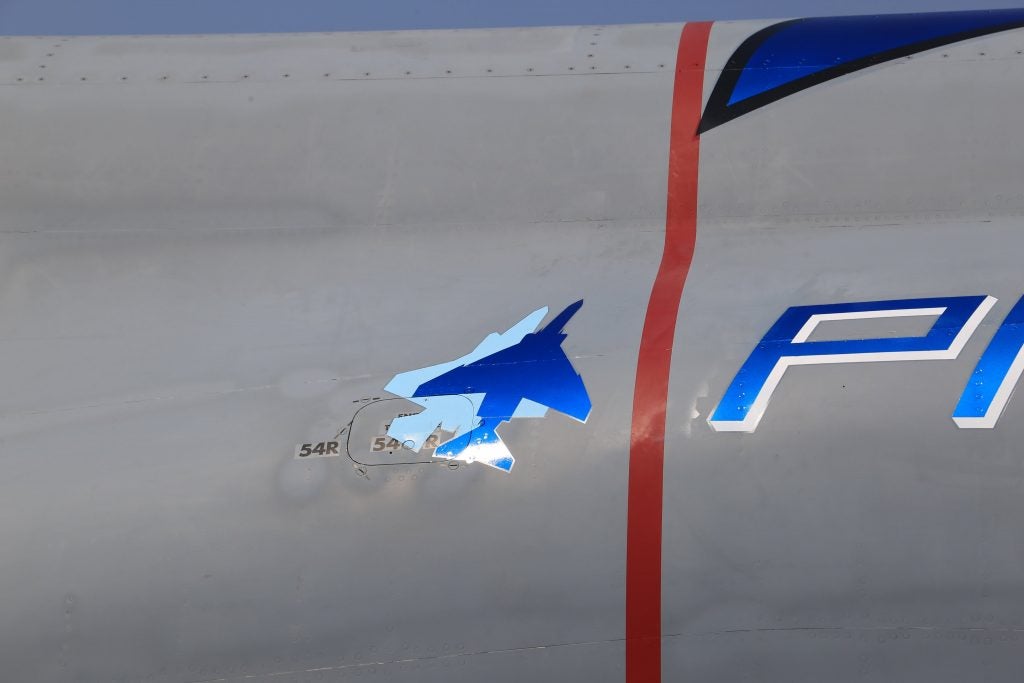
“Phantom Forever” is written on both fuselage sides, alongside another frog motif. A blue Phantom II silhouette is present on both sides, with a light blue F-35 silhouette present underneath it, referencing the squadron’s upcoming transition to the F-35A.
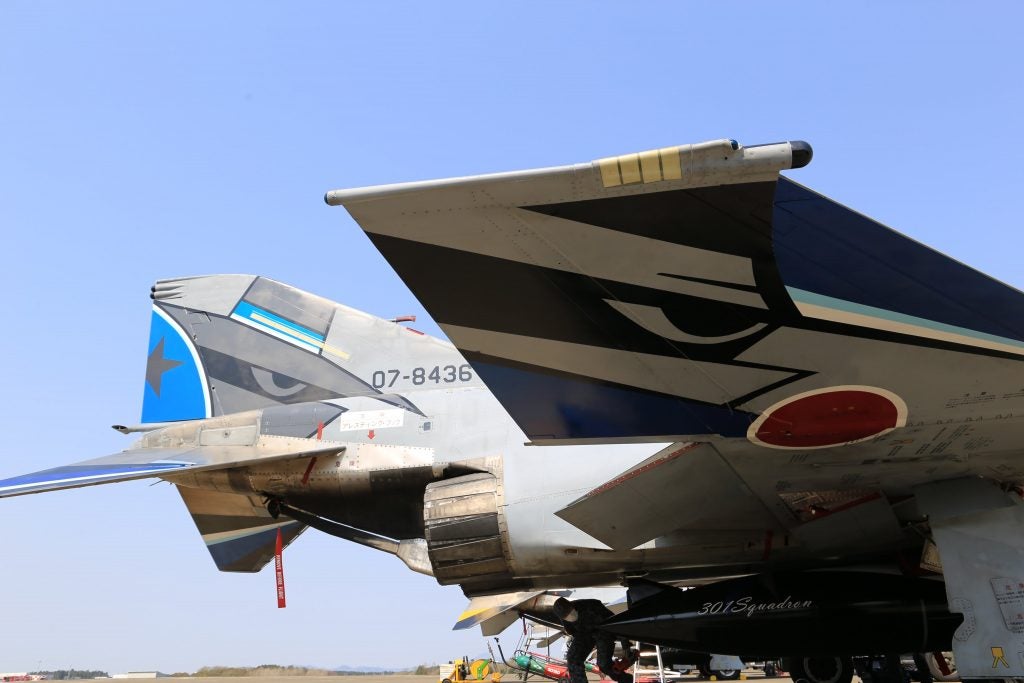
The tailfin features a stylized version of the Phantom II’s famous “Spook” mascot on both sides in silver, blue and black, with the brim of his hat extending onto the fuselage. A blue, black and white design is painted on both the upper and lower surfaces of 436’s horizontal stabilizers.
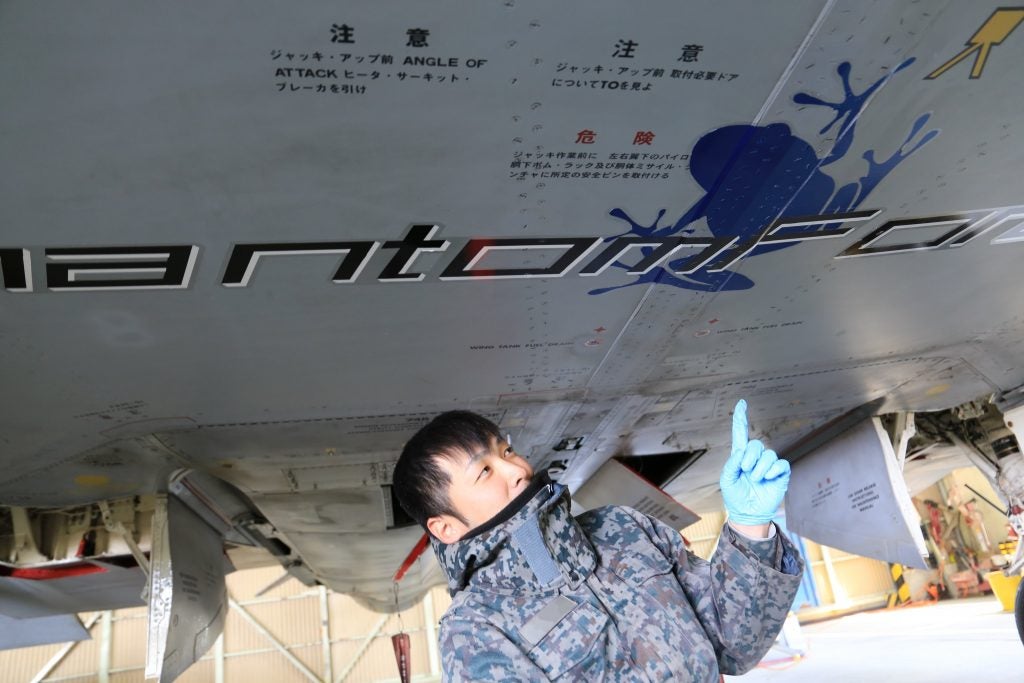
The underside of 436 features another “Phantom Forever” just after the forward fuselage missile recesses, laid over another blue frog motif. Two more “Spook”s are present on the undersides of each outer wing. Last but not least, the centerline and wing fuel tanks of 436 have been given matching blue, white and black paint schemes.
The Squadron
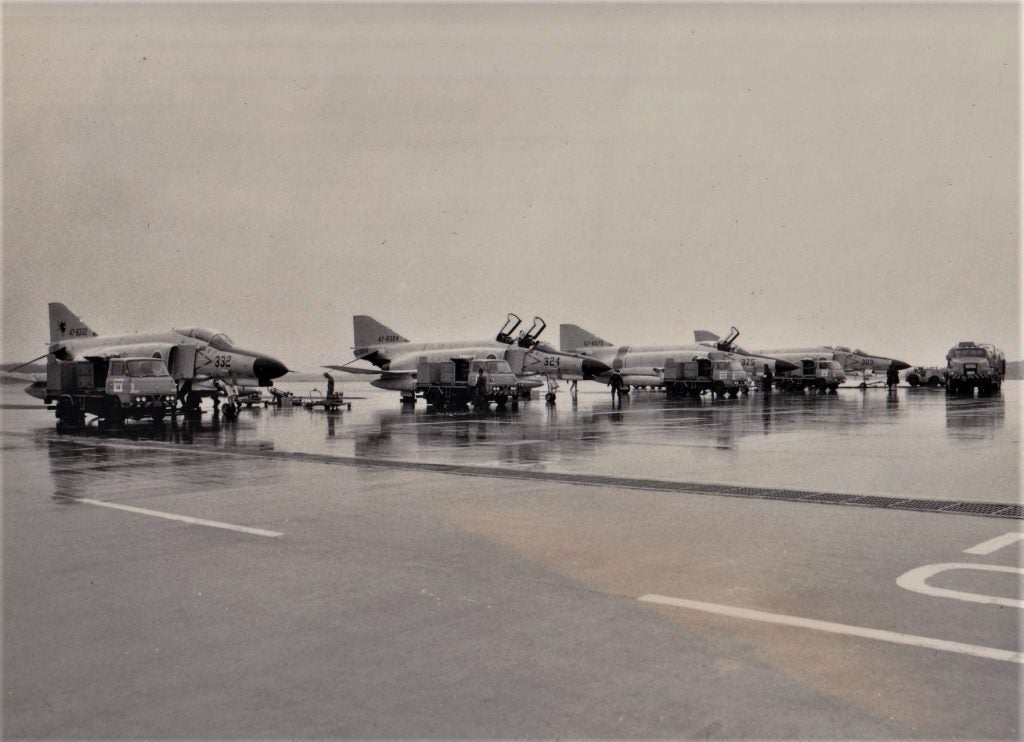
The history of the 301st Tactical Fighter Squadron is inseparable from that of the F-4EJ. The 301st Tactical Fighter Squadron was stood up at Hyakuri Air Base on August 1, 1972, as the provisional F-4EJ squadron, and formally stood up on October 16, 1973, serving as the operational conversion unit for new F-4EJ pilots. The squadron’s frog tail logo was adopted in 1974, as a nod to the frogs of Mount Tsukuba near Hyakuri and as a play on words, with the Japanese for “frog” sharing its pronunciation with “safe return”. The number of stars on the frog’s scarf marked the air wing it belonged to, with 7 stars for the 7th Air Wing in Hyakuri, and 5 for the 5th Air Wing.
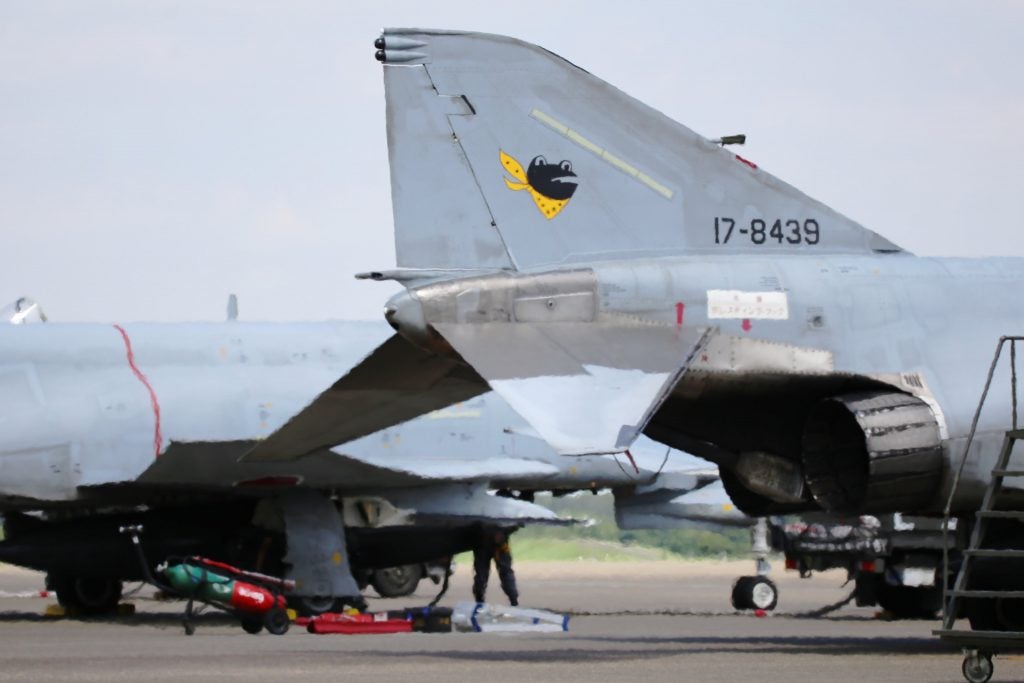
The 301st Tactical Fighter Squadron relocated to Nyutabaru Air Base in 1985, under the 5th Air Wing, taking over the place of the 206th Tactical Fighter Squadron, which was relocating to Hyakuri to re-equip on the F-15J. The squadron began receiving F-4EJ Kais from 1991, and from 2000 onwards became the sole 5th Air Wing squadron on Quick Reaction Alert duties following the disbanding of the 202nd Tactical Fighter Squadron. In 2016, it came full circle by returning to Hyakuri Air Base and the 7th Air Wing after 31 years, where it will remain until the end of fiscal year 2020. After retiring its Phantoms, it will transition to the F-35A and move to Misawa Air Base to join the 302nd Tactical Fighter Squadron.
Alongside the two commemorative F-4EJ Kais, the squadron has been uploading videos of F-4EJ maintenance and flight operations on Hyakuri Air Base’s official Twitter account, allowing a unique look inside F-4EJ operations that was previously exclusive to JASDF servicemembers. Hyakuri has also become a haven for planespotters Japanese and foreign, with many answering the last calls to photograph the final JASDF Phantom IIs. The ongoing Coronavirus pandemic has sadly forced the cancelling of all JASDF base open days this year, further driving plane-spotter interest in photographing the Phantoms at Hyakuri or whenever they go further afield.
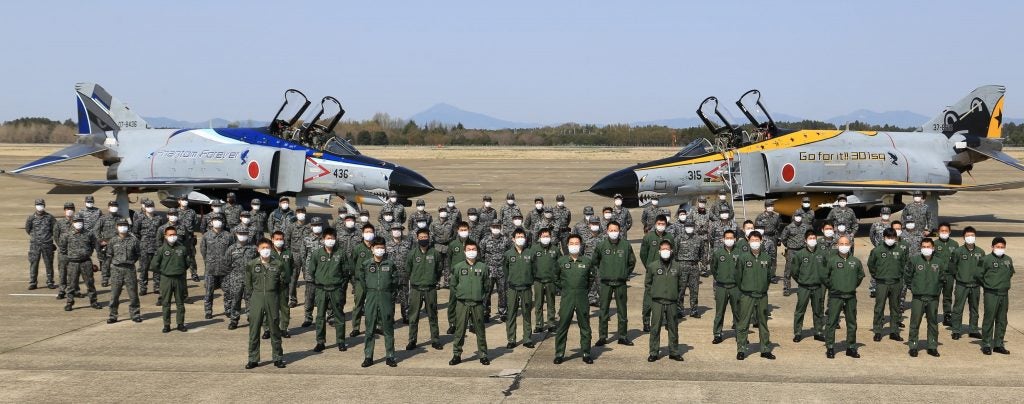
Testing ‘Til The End
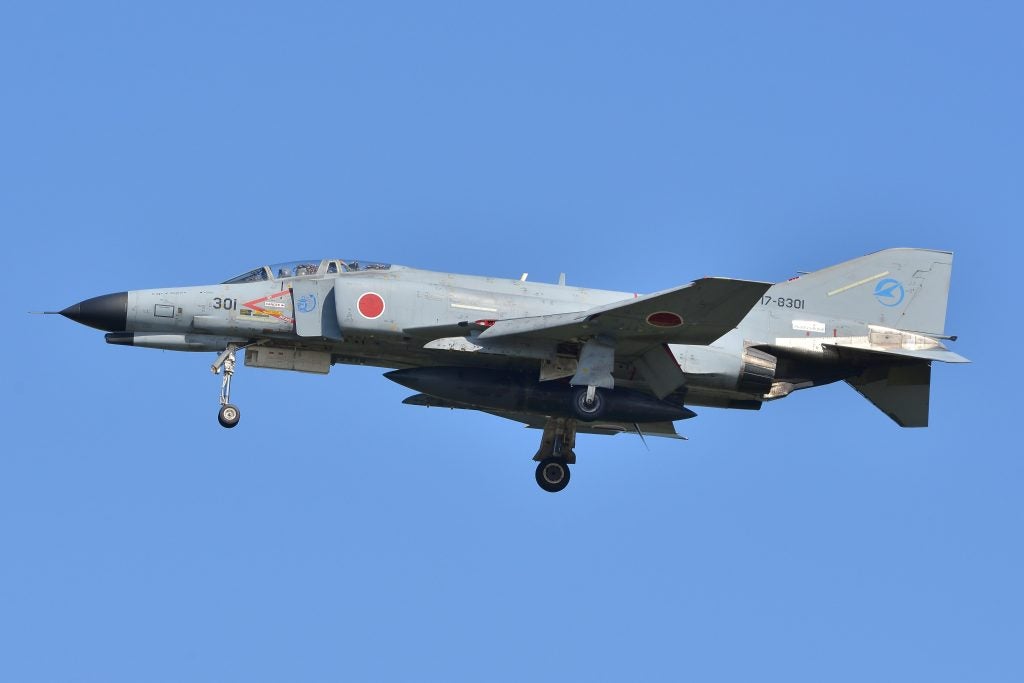
Of course, it would be remiss to not mention the JASDF Air Development and Test Wing, based out of Gifu Air Base in Gifu Prefecture. The ADTW still operates Phantoms, including 301, the first F-4EJ delivered to the JASDF. Phantoms of the ADTW continued flying particle sampling missions over Japan until September this year, with markings commemorating the end of the missions at the end of the month. They still fly as of writing, and will likely only stop alongside the final retirement of the 301st Tactical Fighter Squadron’s Phantoms.
Phantoms Forever
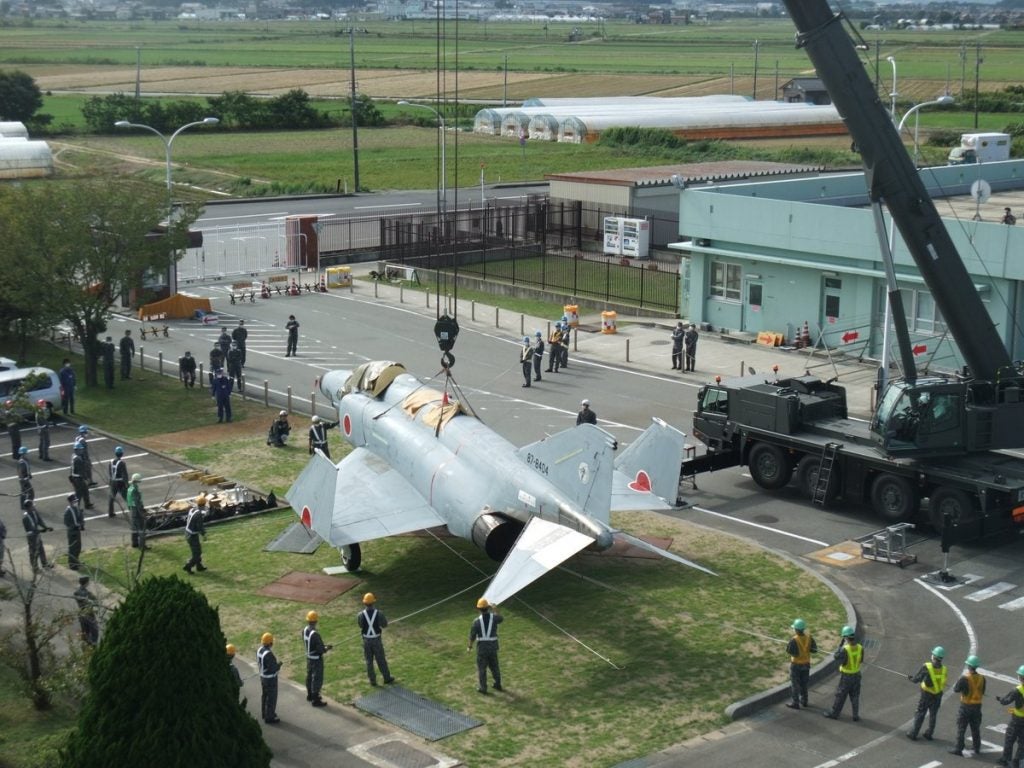
With the notices of final long-range training missions, retirements of squadron members and departure of Phantoms for preservation at air bases they once flew from, the day when the roar of the Phantom’s twin J79s through the Japanese skies finally fades into the memories of its operators and its lovers draws ever closer. But as befits an aircraft that dutifully defended Japan for nearly 50 years and across the reign of three Emperors, its stature in Japanese history and popular culture is like little else.
